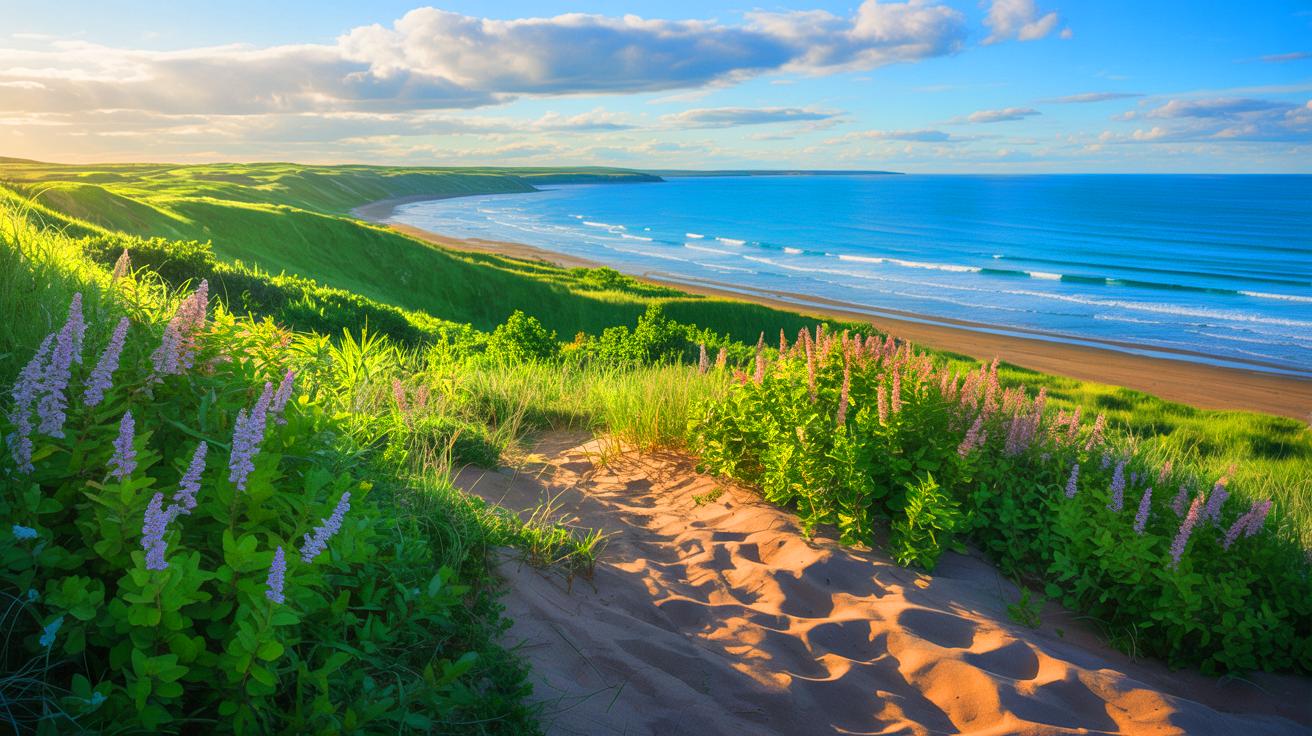- 🌿 Reintroducing myrique des îles helps combat coastal erosion in Îles-de-la-Madeleine.
- 🛡️ The plant’s deep roots stabilize soil and protect against climate change impacts.
- Nature-based solutions like this highlight the importance of sustainable environmental efforts.
- Community involvement is crucial for the success of these ecological initiatives.
The Îles-de-la-Madeleine, a picturesque archipelago in Quebec, is grappling with the harsh realities of climate change. Erosion is eating away at its coastline, threatening both the environment and the communities that call these islands home. In response, Yves Leblanc, a local resident and environmental advocate, has turned back to nature for a solution. He is spearheading an initiative to reintroduce the myrique des îles, a native plant with remarkable ecological benefits, to combat the relentless erosion. This effort highlights a growing trend towards using native flora to tackle environmental challenges, showcasing the potential of sustainable, nature-based solutions in the face of global climate threats.
Myrique Des Îles: A Local Solution to Coastal Erosion
As climate change accelerates, the Îles-de-la-Madeleine are experiencing unprecedented coastal erosion. The once-protective ice that shielded the shores during harsh winters is no longer forming, leaving the islands vulnerable to storms. In this context, the myrique des îles, a plant native to the archipelago, emerges as a promising ally. Yves Leblanc, founder of the Alliance Myrique, is championing the replanting of this species along the island’s dunes, which are crucial barriers against the sea.
The plant’s deep root system helps anchor the soil, mitigating the effects of erosion. This natural defense is vital as the islands’ coastlines are increasingly battered by severe weather events. The initiative not only aims to restore the natural landscape but also seeks to inspire similar ecological efforts globally. By focusing on a plant that is both native and adaptive, Leblanc’s approach underscores the importance of local solutions to global environmental challenges.
An Ecological Powerhouse
The myrique des îles is more than just a tool against erosion; it is an ecological powerhouse. This hardy plant thrives in poor soil conditions, making it ideal for the sandy landscapes of the Îles-de-la-Madeleine. Its ability to fix nitrogen in the soil enhances fertility, paving the way for other plant species to flourish. This creates a cascade of ecological benefits, fostering biodiversity and strengthening the resilience of the local ecosystem.
Moreover, the plant’s role in stabilizing the soil is crucial for preventing further environmental degradation. By enhancing the habitat for various species, the myrique des îles contributes to a balanced and thriving ecosystem. Its reintroduction not only aids in preserving the islands’ natural beauty but also serves as a testament to the power of ecological restoration efforts. In a world facing rapid environmental changes, such initiatives are vital for sustainable development and conservation.
The Broader Implications of Plant-Based Solutions
Yves Leblanc’s initiative is part of a larger movement advocating for the use of native plants in environmental conservation. Across the globe, similar projects are harnessing the unique properties of local flora to address ecological challenges. This approach is gaining traction as it aligns with sustainable principles and leverages nature’s inherent capabilities.
The success of these projects hinges on understanding the specific ecological roles of native plants. By reintroducing them into their natural habitats, environmentalists can restore ecosystems and combat issues like erosion, habitat loss, and biodiversity decline. Such strategies are not only effective but also cost-efficient compared to traditional engineering solutions. As climate change continues to impact natural landscapes, the importance of plant-based solutions becomes increasingly evident, offering a viable path forward in ecological conservation.
Challenges and Future Prospects
While the reintroduction of the myrique des îles presents a promising strategy, it is not without challenges. The success of such initiatives depends on community support, funding, and ongoing research to monitor and adapt the approach as needed. Additionally, the complexities of climate change mean that no single solution can address all environmental challenges.
Despite these hurdles, the project has garnered interest and support from environmentalists and local communities alike. Its potential to inspire similar efforts worldwide is significant. As we look to the future, questions remain: How can we best integrate nature-based solutions into broader environmental policies? What role will local communities play in driving these initiatives? The answers will shape the trajectory of ecological conservation and highlight the enduring relationship between humans and the natural world.
The efforts to reintroduce the myrique des îles on the Îles-de-la-Madeleine illustrate the power of nature-based solutions in addressing environmental challenges. By leveraging the unique properties of native plants, communities can create sustainable defenses against the impacts of climate change. As this initiative progresses, it invites us to consider: How can we further harness the potential of native flora to protect and restore our planet’s ecosystems?
This article is based on verified sources and supported by editorial technologies.
Did you like it? 4.5/5 (26)
